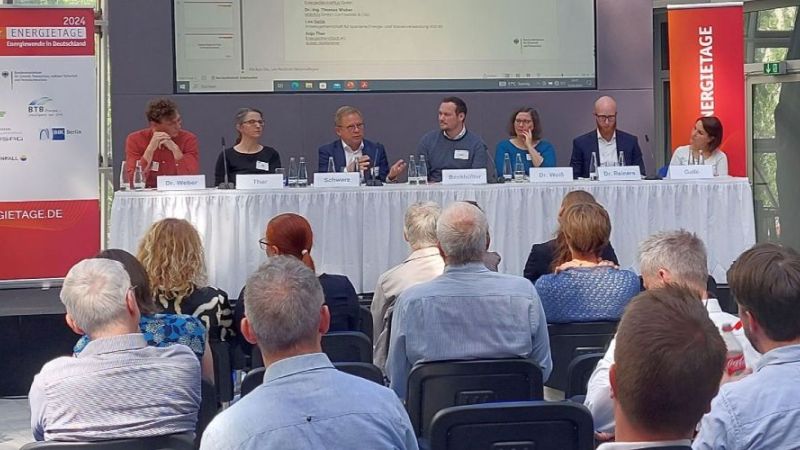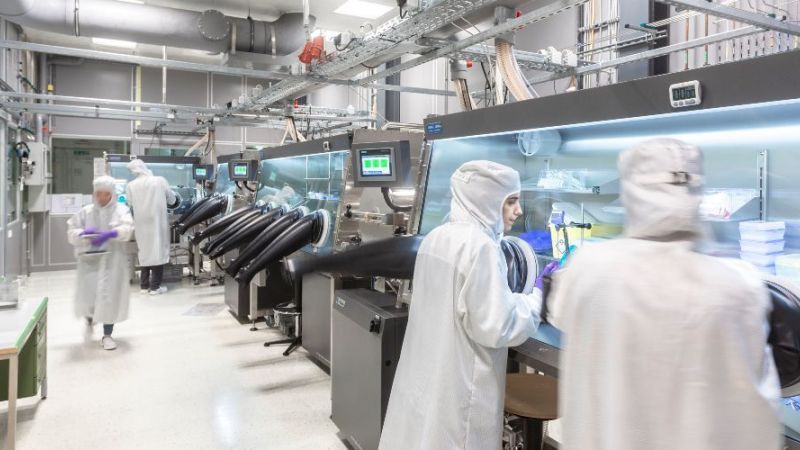 © Cloudy Design – stock.adobe.com
© Cloudy Design – stock.adobe.com
Photovoltaics
Record year: 456 gigawatts of new photovoltaic capacity added worldwide in 2023
The latest Trends Report from the Photovoltaic Power Systems Programme (PVPS) of the International Energy Agency (IEA) analyses how the global photovoltaic sector has developed over the past year. The report also reflects the current ambivalence of the industry between extraordinary growth and substantial challenges – particularly in the production of photovoltaic cells and modules.
According to the trends report, 456 gigawatts of new photovoltaic capacity was installed worldwide last year. Of this, 277 gigawatts were accounted for by the Chinese solar market, which represents almost two thirds of total global growth. 179 gigawatts are attributable to the rest of the world.
Frontrunners in capacity expansion: Germany, Europe and other countries in comparison
In the top five countries with the highest increase in photovoltaic capacity, China is followed by the European Union in second place and the USA in third. With newly installed photovoltaic capacity of almost 60 gigawatts and almost 34 gigawatts in 2023, the EU and the USA were once again able to achieve significant growth compared to their previous year's figures. As in 2022, the top five is completed by India and Brazil. However, India's 13 gigawatts represents a significant decline in new installations compared to 2022. Brazil's increase was only a slight 1.2 gigawatts.
In a country-specific analysis of the EU, Germany comes out on top. New photovoltaic installations here have contributed to a 15-gigawatt increase in capacity. This puts Germany in third place in a direct country comparison, just behind China and the USA, and in the top three for the first time since 2011. Overall, Germany has a cumulative photovoltaic capacity of more than 82 gigawatts, which is achieved with the systems installed in the country.
The authors of the trends report attribute the fact that other countries have not been able to achieve a comparable extraordinary increase to China to various factors. For example, administrative, political or social aspects have resulted in less expansion. Overall, the report identifies significant overcapacity as a major challenge for the industry. This results in problems for the manufacturing industry (a sharp drop in prices for PV components and especially modules) and continues to have an impact in 2024. Nevertheless, the authors see positive development potential for many countries in the coming years with regard to the temporary imbalance between production supply and demand.
Photovoltaics as a central pillar of the energy transition
In terms of global output, the trends report states that at the beginning of 2024, photovoltaic systems with a total capacity of 1.6 terawatts were in operation. These systems have produced more than 2,135 terawatt hours of electricity – thtat is equivalent to 8.3 per cent of the global electricity demand. At the same time, these photovoltaic systems have helped to avoid almost one billion tonnes of CO2 emissions, which in turn corresponds to 2.5 per cent of the global emissions in the energy sector. These figures underscore the central role of solar energy for a sustainable energy transition.
The trends report highlights agri-photovoltaics as an important area of application and development for photovoltaics in 2023. Agri-PV is based on technologies that enable combined land use for simultaneous agricultural production and electricity generation through photovoltaics. From a scientific perspective, agri-photovoltaics is also becoming increasingly relevant and is the subject of a wide range of research projects.
Background to the Photovoltaic Power Systems Programme
The IEA's PVPS programme consists of various research projects, known as tasks. Task 1, ‘Strategic PV Analysis & Outreach’, has produced the current report ‘Trends in Photovoltaic Applications 2024’. In its report, the working group responsible highlights the annual global developments in the photovoltaic sector. This includes detailed industry analyses and statistics. (av)










